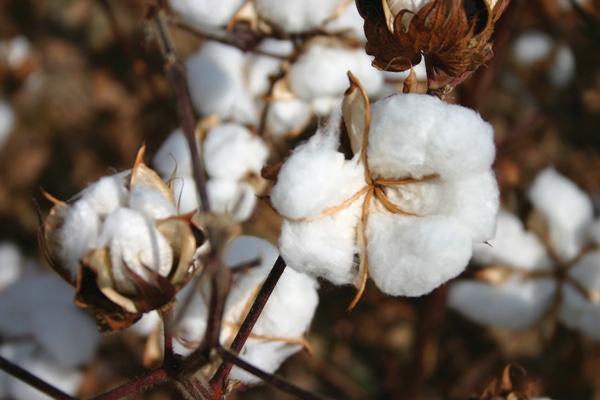
Cotton Incorporated invests $9 million a year in agricultural research to improve the profitability of U.S. Cotton.
“We invest in public sector research,” says Kater Hake, Cotton Incorporated vice president for agricultural research. “We fund at small levels to states, and researchers leverage the funds to get funding from state andother resources. We choose scientists and direct them to develop innovations to help U.S. cotton farmers.”
Cotton Incorporated, the producer-supported cotton research and promotion organization, invests research funds in “just about every institution that has a scientist who is smart and has clever ideas about cotton.”
Hake discussed some of the organization’s top ag research priorities during a multi-region producer tour at the Cary, N.C., headquarters and research facility.
“Our core research is in the public domain, focusing on U.S. problems, with 400 projects that include breeding, pesticide resistance management, support for new pesticides and new tools to make inputs more efficient.”
CI also provides information and tools “to evaluate capital investments,” as well as focusing on efforts to add value to the “non-fiber products” that cotton farmers produce.
Eight scientists work cooperatively in teams, representing “a diversity of expertise — from geneticists to agronomists, weed scientists, entomologists, environmentalists and others.”
Stink bug management has been a key focus in recent years, Hake notes. A project that began in the Southeast to evaluate damage and to devise control thresholds has spread across much of the Cotton Belt. “Stink bugs are a huge problem in the Southeast,” he says.
Researchers developed a dynamic control threshold card that shows boll size needed to sample effectively and to establish a level at which control measures are justified. “Other regions across the Cotton Belt have developed specific cards for each area.”
Cotton Incorporated research efforts also evaluate harvest efficiency, including comparisons of module pickers and traditional harvesters. Ongoing research into new technology helps farmers make decisions, Hake says. “Farmers are using technology and electronic media in a big way; we’ve seen a huge adoption of technology the last few years.”
Risk management efforts also help growers to improve profit opportunities. “We’re concerned about cotton yield stagnation — that’s a big part of risk management, and we want to continue to push yields upward.”
A March 30 risk management seminar at Lubbock, Texas, along with others scheduled across the cotton growing regions, will help farmers evaluate insurance options and to “use other risk management tools better.”
Cottonseed has become an increasingly important aspect of cotton production, Hake notes. Big crops make cottonseed an economical choice for cattle rations and other uses, and “we want to keep it visible.”
One downside to cottonseed is gossypol toxicity, and CI research efforts are aimed at taking the chemical out of the seed while leaving it in the plant itself. Low gossypol cottonseed could significantly increase uses for cottonseed products, he says.
Non-fiber products
Cottonseed meal is considerably less expensive than soybean meal. “The value is less because of gossypol; we want to increase that value, lower refinery costs and go after more high value uses.”
Fish meal, for instance, costs more than $1,200 a ton, and is used extensively in aquaculture, especially for shrimp production. Substituting half of the fish meal ration with cottonseed would be more economical for shrimp producers and provide another use for cottonseed.
Products such as cottonseed flour “are long-term,” Hake says, but gin byproducts offer new opportunities for cotton. “Building materials, packaging, mulch and artificial turf are being made from gin byproducts.”
Studies of cotton varieties that have better nitrogen efficiency are also under way, along with other genetic research.
Breeding efforts include both transgenic and conventional varieties, Hake says. A new conventional variety, developed through cooperative research by Cotton Incorporated and the University of Arkansas, has just been released — UA-48 produces “exceptional quality,” he says. “Conventional cotton can be produced with high quality and good yields.
Nematode management is another cutting edge issue needin g increased attention, he says. “Looking for a nematode-resistant gene will play an increasingly important role with the loss of Temik.”
Cotton Incorporated researchers’ work will allow producers to “push up yields and to push down costs,” Hake says.
About the Author(s)
You May Also Like






